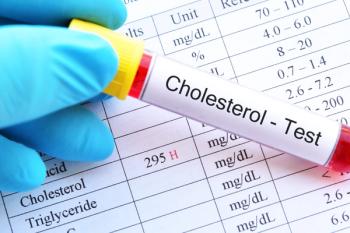
Intravenous Immunoglobulin Elicits Favorable Response in Pregnant Patient With Pemphigoid Gestationis
Key Takeaways
- Pemphigoid gestationis (PG) is an autoimmune blistering disease with significant morbidity for mother and fetus, often presenting in late pregnancy.
- IVIG, combined with corticosteroids, effectively treated PG in a pregnant patient, showing safety and efficacy without increasing infection risk.
IVIG was found to cease development of new lesions and heal previously documented erosions without adverse events to the patient or fetus.
In a pregnant patient with pemphigoid gestationis (PG), a rare autoimmune blistering disease, intravenous immunoglobulin (IVIG) in combination with corticosteroids elicited a prompt response, with the patient experiencing cessation of new lesions appearing and the healing of previously documented erosions, according to a case report published in Cureus.1
PG typically presents itself in late pregnancy and often resolves itself with delivery. However, the clinical course of the condition can be chronic in nature, characterized by relapses and exacerbations during the puerperium, or related to menstruation or the use of oral contraceptives. It carries significant morbidity for both the pregnant patient and the fetus.1,2
Autoantibodies drive the pathogenesis of PG. By activating the complement cascade, an inflammatory response is elicited which causes dermo-epidermal separation and the formation of blisters. A crucial element to confirm a diagnosis of PG, according to characteristic histology of patients, are deposits of C3 and immunoglobulin G along this structure.1,2
IVIG is a widely used option in the treatment of autoimmune diseases of pregnancy, including PG. The treatment has proven efficacy and safety, accounting for up to 22.2% of the therapeutic strategies used to treat PG in a recent meta-analysis by Genovese et al, including as monotherapy. Furthermore, IVIG has been found to not increase the risk of infections and is safe for the fetus.2
In this case, safe and effective use of IVIG in a pregnant patient with documented PG was reported. The patient, a 36-year-old female who was previously healthy with no history of autoimmune disease, consulted a tertiary-level hospital with dermatosis of abrupt onset, characterized by vesicles and blisters. An initial dose of deflazacort (Emflaza; PTC Therapeutics) had a poor response, and the patient was hospitalized.1
A skin biopsy of the patient’s right arm showed findings compatible with PG. Given the patient’s failure with initial oral steroids, deflazacort was changed to intravenous methylprednisolone; subsequently, oral prednisone was started. In addition, IVIG was concomitantly administered at a total dose of 2 g/kg for 5 days.1
Follow-up evaluation following the application of IVIG showed an adequate response to treatment. The patient demonstrated an absence of new lesions and healing of their current erosions; they were discharged on day 10 of hospitalization and continued with oral steroid tapering therapy.1
Eight weeks after discharge, the patient documented a relapse of the disease when the prednisone dose was reduced to 15 mg/day, which led to a new hospital admission. Following a diagnosis of intrauterine growth retardation, an elective cesarean section was successfully performed. Due to the persistence of disease activity and the high doses of steroids required, steroid-sparing treatment and a new cycle of IVIG were initiated.1
Upon reevaluation 19 weeks later, a complete remission of the clinical picture was observed. Importantly, no adverse events related to IVIG use were described during the patient’s follow-up evaluation, and breastfeeding to their newborn was not restricted. The newborn, after a brief hospitalization for 2 weeks due to low birth weight, was eventually discharged with no complications.1
An advantage to IVIG use is its ability to cross the placenta in pregnant patients, providing an additional advantage in the treatment of various autoimmune conditions that arise during pregnancy. This proved important in the treatment of the current case.1
“There is a compelling need for further research on IVIG management strategies for PG to strengthen the evidence collected so far, which may eventually facilitate the development of a valid and protocolized treatment consensus,” the study authors concluded.1
REFERENCES
1. Martínez-Calvo J, Correa-Jimenez O, Alfaro-Murillo A. Use of intravenous immunoglobulin in the treatment of pemphigoid gestationis: A case report. 2024;16(10):e71799. doi:10.7759/cureus.71799
2. Genovese G, Derlino F, Cerri A, et al. A systematic review of treatment options and clinical outcomes in pemphigoid gestationis. Front Med. 2020;7. doi:10.3389/fmed.2020.604945
Newsletter
Stay informed on drug updates, treatment guidelines, and pharmacy practice trends—subscribe to Pharmacy Times for weekly clinical insights.


















































































































































































































